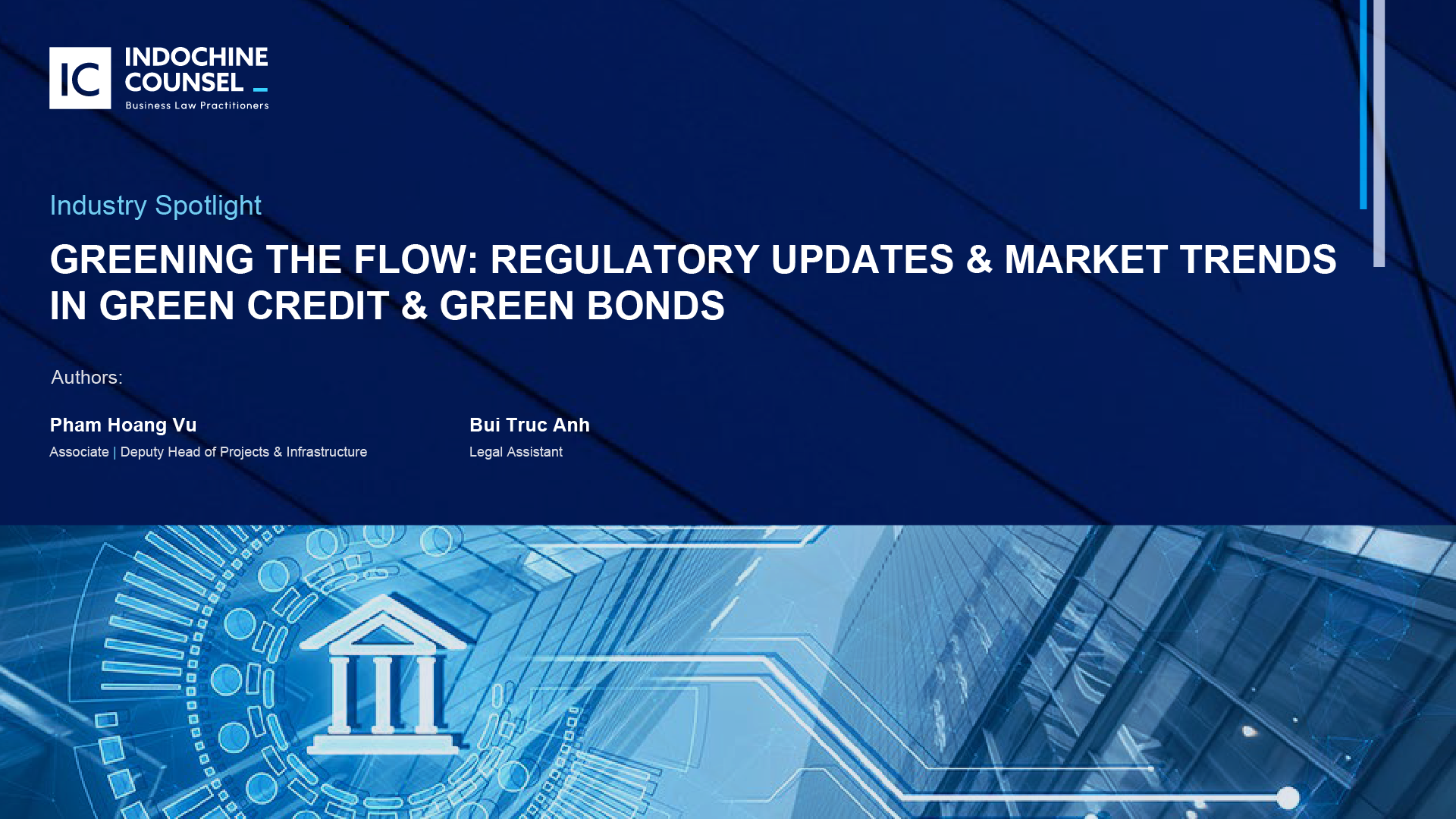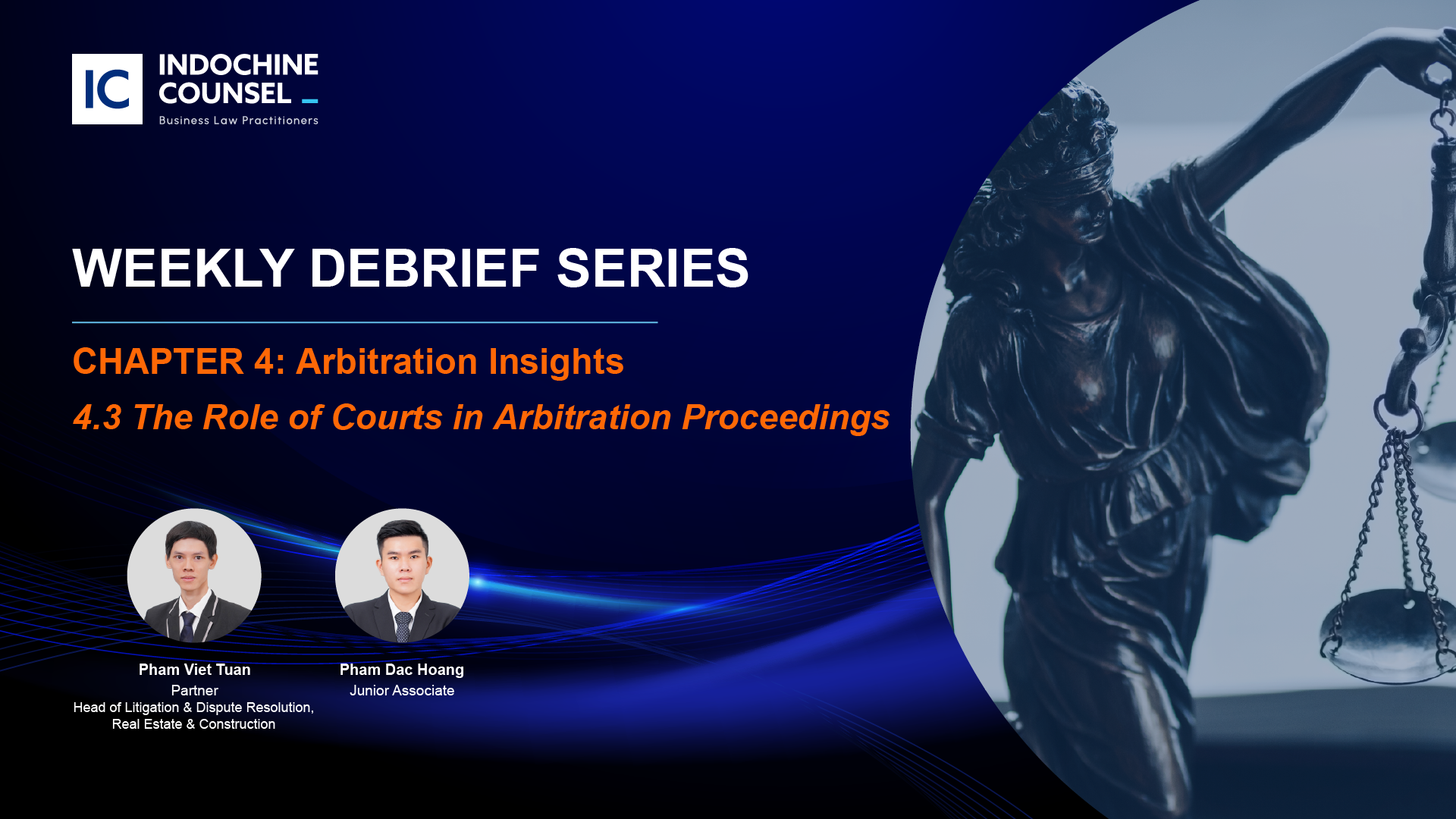
Ho Chi Minh City, 14 April 2025
As Vietnam accelerates its transition toward a low-carbon economy, green credit and green bonds are emerging as essential tools to finance environmentally sustainable projects. Backed by the Environmental Protection Law 2020 and the Draft Decision on green financing criteria released in February 2025, these instruments are redefining how capital flows into infrastructure, energy, and clean-tech ventures across the country.
In edition of our Industry Spotlight, written by Mr. Pham Hoang Vu, Associate | Deputy Head of Projects & Infrastructure and Ms. Bui Truc Anh, Legal Assistant, we break down the evolving regulatory landscape, key incentives, and practical legal considerations shaping the future of green finance in Vietnam.
Key Developments in Vietnam’s Green Credit & Bonds Framework
On 18 February 2025, the Vietnamese government released a Draft Decision outlining environmental criteria and certification procedures for projects eligible for green credit and green bond issuance. This long-awaited framework strengthens investor confidence and clarifies expectations around environmental impact assessment (EIA), eligibility conditions, and ESG compliance.
Eligible projects span across multiple sectors, including:
-
Renewable energy systems and infrastructure
-
Green construction and low-emission transport
-
Water and waste management
-
Sustainable agriculture and biodiversity conservation
-
Circular economy and low-carbon manufacturing
Incentives for Green Credit Providers
Credit institutions and foreign bank branches offering green loans are entitled to:
-
Access preferential government funding
-
Receive state-coordinated training on green credit practices
-
Potential post-loan interest rate support (effective from January 2026)
These incentives signal a shift in Vietnam’s financial strategy, encouraging greater alignment between bankable projects and environmental objectives.
Legal Structuring of Green Finance Deals
To ensure credibility and compliance, we advise that all green transactions include:
-
Approved environmental licensing or EIA documentation
-
Clear use-of-proceeds clauses
-
ESG reporting obligations and second-party opinions
-
Tailored representations, warranties, and performance covenants
-
Contractual flexibility to accommodate future regulatory changes
Legal safeguards are especially important as Vietnam’s green finance market expands to include offshore wind, sustainable transportation, and nature-based solutions.
Trends to Watch in 2025
-
TPBank launched a VND 5,000 billion green loan package, offering zero-interest for initial terms.
-
Gia Lai Electricity JSC (GEC) became the first enterprise certified under Vietnam’s Green Finance Framework, with plans to issue green bonds for two offshore wind projects.
-
BIDV leads in green credit, with over VND 63.7 trillion in green loans across 1,300+ projects, supported by second-party ESG verification.
-
International development institutions, including Asian Development Bank (ADB), continue to co-finance green loans targeting SMEs, especially those led by women.
Vietnam’s green finance ecosystem is evolving rapidly, supported by strong legal foundations, government incentives, and investor demand for sustainable returns. As the regulatory framework matures, now is the time for stakeholders to understand their role in financing a greener future.
If you are planning to issue a green bond, secure a green loan, or develop an environmentally qualified project, Indochine Counsel is ready to guide you through every legal step. Contact our team to get started!










